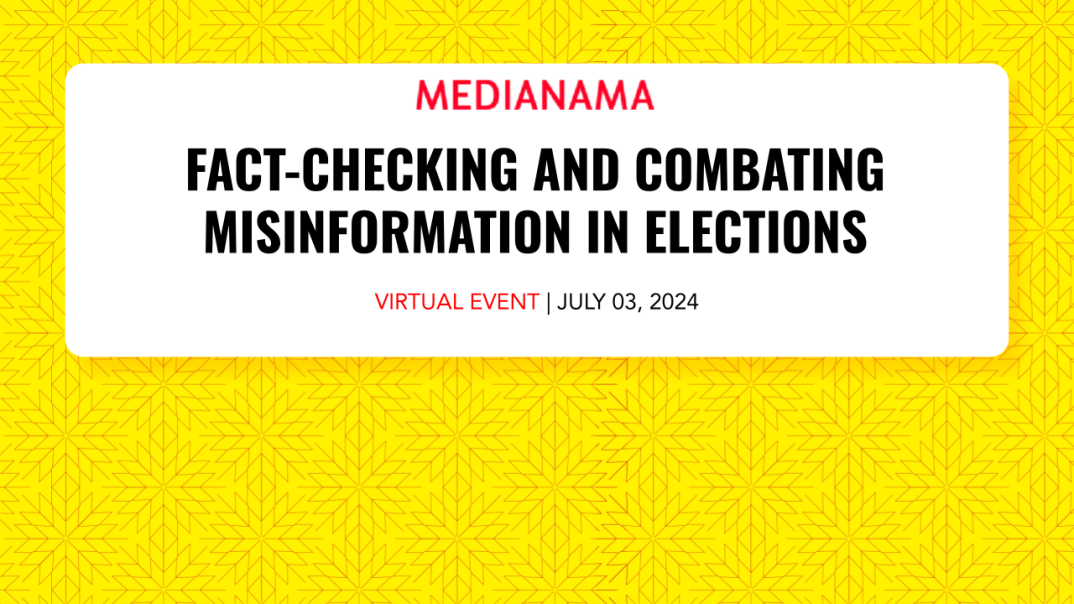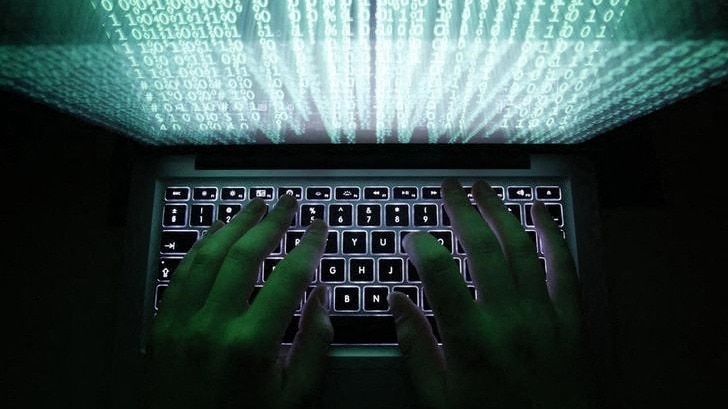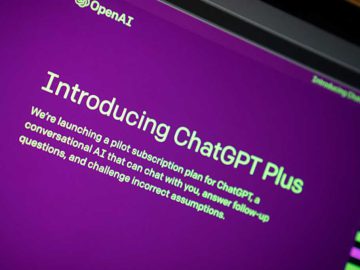“This election was a testing ground…..it was not a democracy-shaking election or a destabilizing election….what we are going to see in the future elections is what we need to keep our eyes on. We can’t take our eyes off, because this [AI] is a new tool that everyone is very excited about,” said Jency Jacob, Managing Editor at Boom, at MediaNama’s discussion ‘Fact-checking and Combating Misinformation in Elections’ on 3 July 2024.
The stage for the discussion was set with speakers being asked to share a quantitative assessment of the misinformation they observed during the 2024 Lok Sabha elections. Panelists observed that old techniques such as edited and manipulated videos continued to reign supreme, despite expectations of an AI-driven election. Many within the panel noted a sense of fatigue with misinformation this election, with narratives reaching a point of saturation. However, they believed this was only because these elections served as a testing ground for political parties to push the boundaries of misinformation that can be peddled.
QUANTITATIVE ASSESSMENT OF MISINFORMATION IN ELECTIONS
How much misinformation did we observe during the elections?
The panellists were asked to share the volume of misinformation that they or their organization observed. They were also asked to break down into numbers or percentages the mode of misinformation, i.e., audio, video, and text.
Jency Jacob, Managing Editor at BOOM Fact Check shared that between March 1 and May 31, 2024, the organization published 258 election-related fact-checks. These were in English, Bangla, and Hindi. Of the 258, 111 were old unrelated content, 10 were communal claims, and 10 were EVM rigging claims. 12 were AI-generated claims, with 3 being deepfakes and 9 being voice clones.
Abhilash Mallick, Editor at Quint Fact Check, noted that from March 15 to June 15 they published close to 300 fact checks in both Hindi and English (some repetitions as they were translations into English). Of these, 75% contained video clips, around 25% were images, and close to 10% were texts and other forms. 25% of these stories had a communal tone, targeting certain communities. Quint also published 5 of what they call “Neta fact-checks” wherein they fact-check claims made by prominent politicians during election campaign speeches.
Kritika Goel, Head of Editorial Operations (India) at Logically Facts, shared that between February 1 and June 4, the organization conducted 224 fact checks specific to the Lok Sabha elections i.e. excluding fact-checks about assembly elections, which were held simultaneously in Andhra Pradesh and Odisha. More than 50% of this content was visual misinformation (videos and text). And around 43% of the total number of fact-checks was old unrelated videos. She also shared numbers from “Project Shakti,” a consortium of fact-checkers and news publishers, which revealed that 86% of all the fact-checks were of visual content. Nearly 4% of all the stories done by Logically Facts India were deepfakes and audio clones.
Rajneil Kamath, Founder and Publisher of Newschecker, shared that from 1 March to 31 May, Newschecker published about 808 fact-checks, all hyper-local but not all translations. Of these, 46% was video with text, 25% was image with text, 17% was solely video, 7% image, 3% text; others were 2%. Newschecker further analysed these instances of misinformation and calculated that 60% of all fact-checks could be classified as false, 21% had missing context, 13% were altered images, and 6% were partly false.
He also provided a percentage breakdown of the genre of content:
- Politics- 67%,
- Religion-6%
- International relations- 7%
Of these, around 52% which amounted to around 416 fact-checks had to do with the general elections. Wide topics noted were:
- Vote-rigging allegations- 4%.
- Wealth redistribution allegation -1.36%
- Israel-Palestine conflict-1.24%
- The removal of quota- 0.99%,
- Arvind Kejriwal arrest -0.87%.
How many claims came from verified sources?
51.1% of Boom’s 258 fact-checks involved claims shared by verified social media accounts. X (formerly Twitter) accounts of BJP were responsible for spreading misinformation in at least 11 instances, Congress’s accounts in 6 and Trinamool Congress’s in 4. Mallick said that The Quint saw more than 70% of the claims shared by “at least one verified handle.”
Kamath noted that this can also be potentially misleading as X’s new verification system simply requires users to pay in order to be “verified.” Thus, it is challenging to truly confirm the legitimacy of an account sharing misinformation. According to Newschecker’s analysis, 38% of misinformation was shared by verified pages. Of these 1% targeted certain specific communities, 10% targeted women, and 14% shared misinformation that was communal. 2% of these were amplified by mainstream media.
Which phase of the election observed the most misinformation
The discussion also aimed to understand the phase of elections that observed the most amount of misinformation. Fact-checkers could provide an assessment of this based on the number of fact-checks they had to publish in a phase.
Kamath noted that there was an “election bump,” wherein the number of people asking for content to be fact-checked on their Whatsapp tipline had doubled between March and April and held steady for May and June. “..As soon as a phase of an election got over, after that, misinformation in that region would naturally come down, and would shift to where the next phase was going to be,” he observed.
“The prevalence of a claim would depend on the phase in which that state is going to elections,” Goel noted. As an example, Karnataka was voting on the 26th and 7th of May. “So, we saw a lot of misinformation around Karnataka or matters pertaining to Karnataka before the 26th of April and then the 7th of May,” she said.
Jacob also observed that “the prevalence of what you see on your devices goes up as you are in the thick of the phase-wise election at that point of time.”
Boom received 15,000 fact-check requests in April, coinciding with Phase 1 and 2, a high number for Boom in April, Jacob noted. It then continued to decrease till the end of June.
Mallick shared that 40% of fact-checks were published in the first two phases, before the elections and until the end of the second phase, with fewer in the fourth and fifth phases observing a “lull period.” However, he noted that there was a rise in misinformation towards the end of the election and after the declaration of results, as around 20% of the fact checks were published in the last phase and post results.
LARGER TRENDS IN THE LANDSCAPE OF MISINFORMATION DURING ELECTIONS
When asked if he had observed any unique trends in this election, Shivam Shankar Singh, a Data Analyst and Campaign Consultant, said, “I saw fatigue setting in. A lot of the fake news, a lot of the misinformation was on exactly the same issues and exactly the same narrative. And anyone who was going to support that narrative was already voting for a particular political party. It’s not like they got convinced because of one piece of misinformation.”
Jacob concurred with this assessment and also noted a marked difference in this election. “Usually what we see is that there is an entire network of accounts that are probably on the forefront. They are the ones who are pushing out the maximum number of narratives in terms of the agenda. The narrative is obviously being set up by someone,” he said. However, what was unique this time was that “misinformation was set right from the top in terms of the political leadership. What we saw is that everyone was trying to address it or to take it further or trying to counter it. It was not the minions or the people who are in the mid-level or the second-rank political leaders who were pushing out false information,” said Jacob.
However, Mallick noted that political parties were apprehensive about spreading misinformation through deep fakes due to the ECI’s directions on misinformation before the elections and lack of clarity on “how hard they can push the line.” As an example, he mentioned deepfakes of MP Mayawati showing support for the BJP and Congress were shared before the election. He observed that even a cheap and easily created piece of content such as that was not remarkably distributed during the Lok Sabha elections.
Kamath also observed that hotly contested elections with lower margins increase the incentive to spread misinformation. Thus, he said that upcoming State elections, like the ones in Maharashtra, will be a good barometer of tactics to come from political parties.
Tarunima Prabhakar, co-founder of Tattle Civic Technologies said, “ We are operating in a world where we’re telling people ‘don’t trust what you’re seeing on the internet.’ The consequence also is that people are also distrusting true headlines…..[while] it makes you better at discerning bad headlines, it also makes you worse at discerning true headlines.”
TACTICS AND PATTERNS OBSERVED
When asked about the misinformation tactics they had observed, Mallick said a lot of videos and images from 2018, “were re-shared by [regular] users, not even party members or party supporters. But regular social media users had come across those at some point or the other, and they had shared it on their social media platforms again in 2024.” When fact-checkers were asked about which social media platform caused the highest spread of misinformation, they said that it was hard to point out as there was a pattern wherein misinformation would be moving from one platform to the other.
Kamath noted that new technology and misinformation tactics that are used globally end up coming into India as well. However, he said, that while in this election people were focused on what AI could do, “sometimes it’s the very simple techniques of misleading that really still get used, and we shouldn’t discount the power that that has to continue misleading people. That was one learning, that old methods will reign supreme still.”
When fact-checkers were asked if had seen any content related to voter suppression, Jacob noted that BOOM saw a lot of discussion around EVMS. “The intention behind that was to actually confuse voters, and to tell voters that you cannot trust anything that you’re seeing,” he said.
Further, he added, “Political narratives that were being run- that one political party is going to win the election, irrespective of whatever happens. I find that to be another form of voter suppression.” Mallick agreed and added that sometimes party members or supporters of the parties edit exit poll results or the opinion poll results. This serves to either convey that a party is winning and therefore does not need votes or discourage voters from voting for a party that appears to be losing by a wide margin.
The panelists were also asked whether these instances of incorrect information were misinformation or disinformation. Jency Jacob said that in very hotly contested elections, where multiple political sides who are fighting the election are not willing to yield in any form, “there is nothing called as genuine misinformation.” He said a player pushing and peddling narratives is spreading disinformation because he/she “definitely knows it is not true, definitely knows that it will create a poor information ecosystem, definitely knows that it will lead to people voting in a very different way.”
Also Read:





